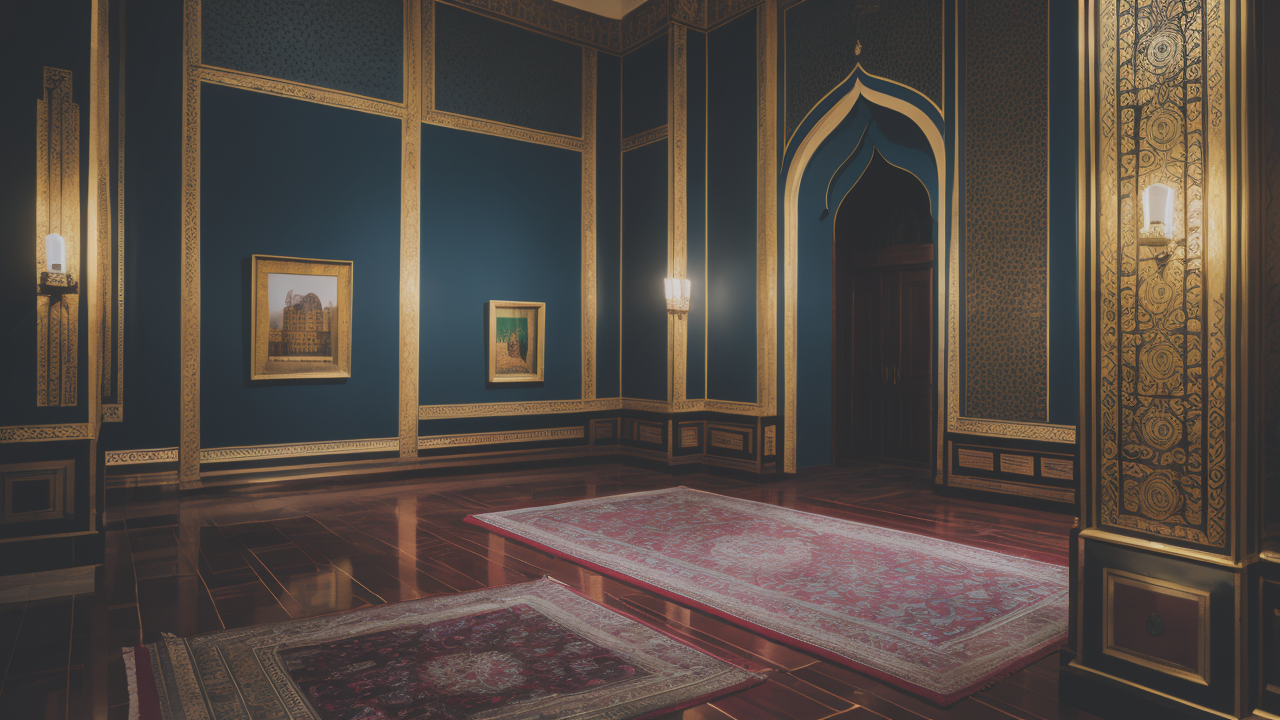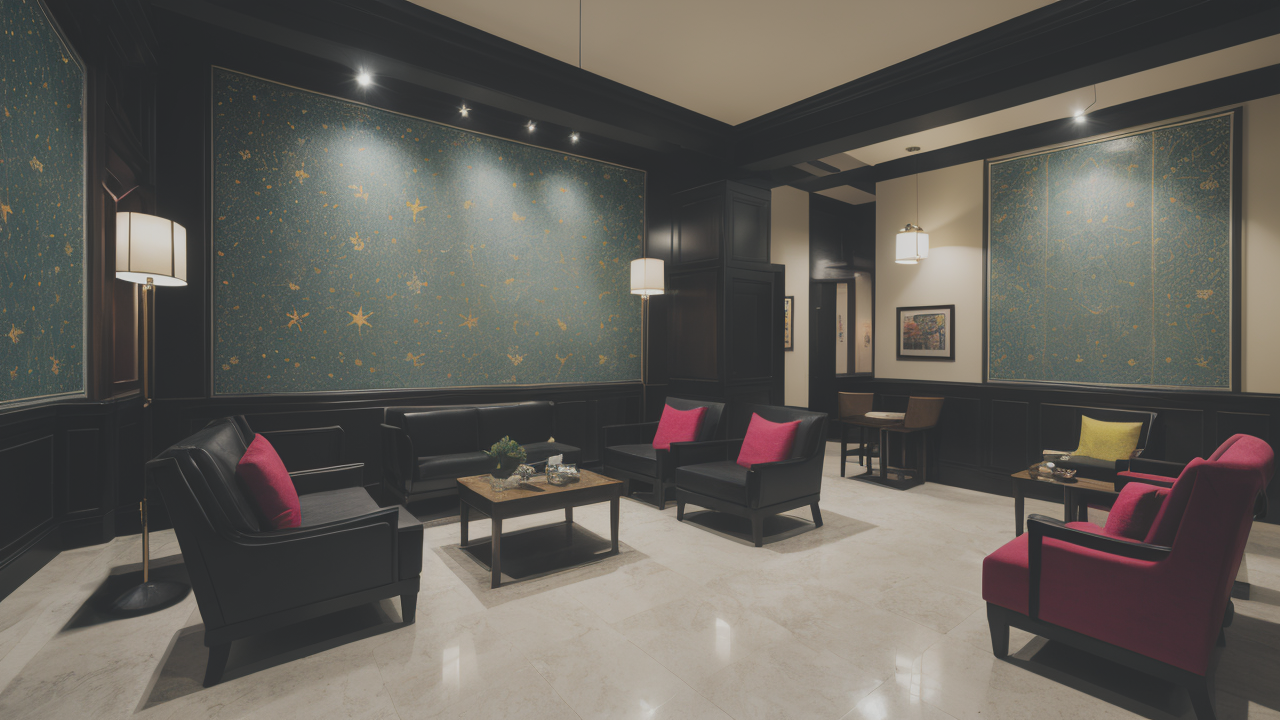
Embracing Wabi-Sabi: Creating Textured Wall Art with Indian-Inspired Designs
The Historical Significance of Nawabi Art in American Homes
The Origin of Nawabi Style Decor
Nawabi style decor has its roots in the rich cultural heritage of India. It emerged during the 18th and 19th

centuries in the courts of Indian rulers. The style blends Persian, Mughal, and Indian influences. Nawabi
art is known for its intricate patterns and vibrant colors. Gold leaf and jewel tones are common elements.
Floral motifs, calligraphy, and scenes from royal life are key features. This lavish style reflects the
wealth and refinement of the Nawabs. Over time, Nawabi art has evolved but kept its core essence. It
continues to inspire artists and designers worldwide. The style's beauty lies in its ability to tell stories
through visual elements. Each piece of Nawabi art is a window into India's royal past.
Nawabi Art in the United States: From Private Collections to Public Spaces
Nawabi art first entered the US through private collectors and museums. Wealthy Americans brought back
pieces from their travels to India. Museums began to showcase Nawabi art in special exhibits. This exposed
more people to the style's beauty and craftsmanship. Gradually, Nawabi-inspired designs started appearing in
homes. Interior designers began using Nawabi elements in their work. Hotels and restaurants adopted the
style to create exotic atmospheres. Public spaces like libraries and theaters also embraced Nawabi art.
Today, Nawabi influences can be seen in various settings across the US. From upscale homes to trendy cafes,
the style has found a place in American design. This shift has brought Nawabi art from exclusive collections
to everyday spaces.
Nawabi Wall Art: A New Trend in Home Decor and Commercial Spaces
Reviving Tradition: How Nawabi Art is Influencing Contemporary Design
Nawabi art is making a comeback in modern design. Designers are blending traditional elements with

contemporary styles. This fusion creates a unique aesthetic that appeals to many. Here are some ways Nawabi
art is influencing today's design:
- Large-scale wall murals featuring Nawabi-inspired patterns
- Wallpapers with intricate Mughal motifs
- Modern furniture with Nawabi-style inlay work
- Light fixtures inspired by Nawabi chandeliers
- Textiles with Nawabi-inspired prints
- Digital art pieces that reimagine classic Nawabi themes
These elements add a touch of luxury and history to modern spaces. They bring warmth and cultural depth to
interiors. The rich colors and patterns create visual interest in any room. Nawabi-inspired design can
transform a plain space into a stunning one. It offers a way to incorporate art and culture into everyday
surroundings.
Case Studies: Successful Nawabi Wall Art Installations
Several projects have successfully incorporated Nawabi wall art. A luxury hotel in New York City features a
grand lobby mural. It's inspired by Nawabi miniature paintings and covers an entire wall. The mural creates
a striking first impression for guests. A high-end restaurant in Los Angeles used Nawabi-inspired wallpaper.
The intricate patterns add elegance to the dining area. A tech company in San Francisco painted Nawabi-style
motifs on office walls. This adds a creative touch to their workspace. An art gallery in Chicago held an
exhibit of modern Nawabi-inspired art. It showcased how traditional styles can be reimagined for today's
tastes. These examples show the versatility of Nawabi wall art in various settings. They prove that this
style can adapt to different environments and purposes.
Future of Nawabi-Inspired Wall Art in the Market
The Role of Social Media in Popularizing Nawabi Aesthetics
Social media has played a crucial role in popularizing Nawabi aesthetics. Platforms like Instagram and

Pinterest showcase stunning Nawabi-inspired interiors. This exposure has increased interest in the style.
Interior designers share their Nawabi-inspired projects online. This inspires others to try the style in
their own homes. DIY enthusiasts post tutorials on creating Nawabi-inspired decor. This makes the style more
accessible to a wider audience. Hashtags like #NawabiDecor and #IndianInspiredDesign are trending. They help
people discover and share Nawabi-inspired content. Influencers often feature Nawabi elements in their home
tours. This further spreads awareness and appreciation for the style. The visual nature of social media is
perfect for showcasing the beauty of Nawabi art.
Predictions for Nawabi Wall Art Trends in the United States
Experts predict several trends for Nawabi wall art in the US market:
- Sustainable materials: More artists will use eco-friendly materials for Nawabi-inspired art.
- Digital Nawabi art: Digital renditions of Nawabi patterns will become popular.
- Customization: People will seek personalized Nawabi-inspired designs.
- Minimalist Nawabi: A simplified version of Nawabi art will appeal to modern tastes.
- Fusion styles: Nawabi elements will be mixed with other design styles.
- 3D Nawabi art: Three-dimensional wall installations will gain popularity.
- Nawabi-inspired wallpapers: More options will be available for easy application.
- Interactive Nawabi art: Pieces that incorporate technology for a unique experience.
These trends show that Nawabi wall art is adapting to modern preferences. It's likely to remain popular in
US design for years to come. The style's versatility allows it to fit various aesthetics. This ensures its
continued relevance in the ever-changing world of interior design. As more people seek unique and culturally
rich decor, Nawabi art will continue to thrive and evolve.
In conclusion, Nawabi-inspired wall art is experiencing a resurgence in US design. Its rich history and
stunning visuals make it a popular choice for modern spaces. From private homes to public areas, Nawabi art
adds elegance and cultural depth. Social media has helped spread its popularity, inspiring more people to
embrace the style. As it evolves to meet contemporary needs, Nawabi wall art is set to remain a significant
trend. Its ability to blend tradition with modernity ensures its lasting appeal in the diverse US market.
The future of Nawabi wall art looks bright, with new innovations on the horizon.


